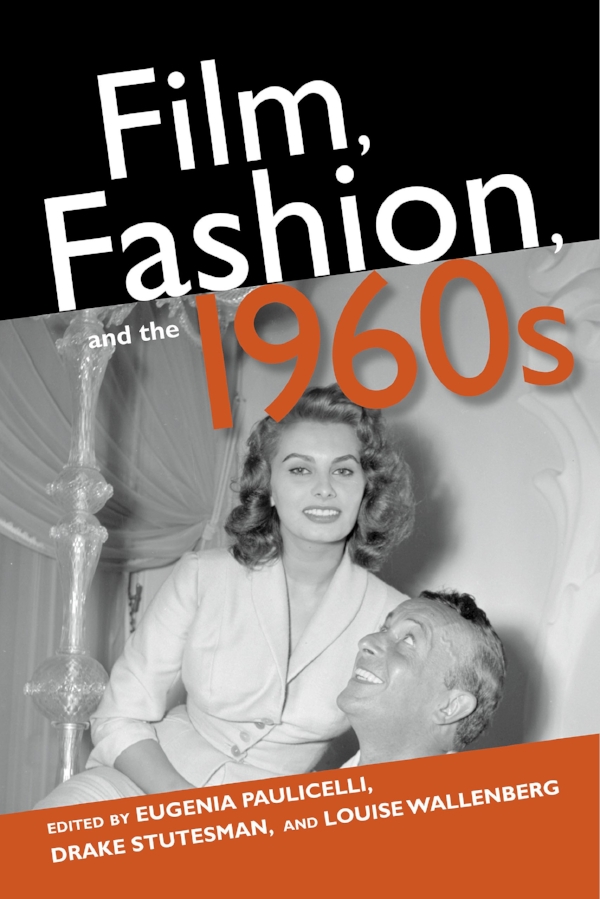
A fascinating look at one of the most experimental, volatile, and influential decades, Film, Fashion, and the 1960s, examines the numerous ways in which film and fashion intersected and affected identity expression during the era. From A Hard Day’s Night to Breakfast at Tiffany’s, from the works of Ingmar Bergman to Blake Edwards, the groundbreaking cinema of the 1960s often used fashion as the ultimate expression for urbanity, youth, and political (un)awareness. Crumbling hierarchies brought together previously separate cultural domains, and these blurred boundaries could be seen in unisex fashions and roles played out on the silver screen. As this volume amply demonstrates, fashion in films from Italy, France, England, Sweden, India, and the United States helped portray the rapidly changing faces of this cultural avant-gardism. This blending of fashion and film ultimately created a new aesthetic that continues to influence the fashion and media of today.
About the exhibit:
From Friday, March 12, through Saturday, May 1, 2010, mannequins dressed in 1960s European fashions combined with legendary foreign films of the period to evoke a vital creative era, in the James Gallery’s latest exhibition, FASHION + FILM, The 1960s Revisited, on view . The exhibition evoked a vital era on Fifth Avenue as the Graduate Center and the James Gallery, with its grand storefront windows, are housed in the former B. Altman department store building at 365 Fifth Avenue (between 34th and 35th Streets).
B. Altman contributed to the launch of Brioni, Roman Style (Luxury Men’s wear) in the US. B. Altman’s buyers went to Italy to the Florence Fashion shows, organized by Giovanbattista Giorgini. In the picture below, there is a 1952 red velvet Brioni jacket from the Brioni Archive in Penne, Italy. The jacket was kindly lent by the Brioni Company for the show at the James Gallery. At the Florence Fashion shows, Brioni was the only men’s fashion house to parade with women’s models.
The location of the James Gallery within the historic B. Altman building, key in introducing Italian and European styles in the U.S., makes it a perfect fit for this kind of exhibition and its concept. Through the viewing of films, where clothes are in action, juxtaposed with the fashionably dressed mannequins, the exhibition explored the interaction between geographic spaces (cities and countries), public spaces, the street, the movie theater, the department store, and private spaces. 2010 marked the 50th anniversary of films such as La Dolce Vita by Federico Fellini, L’Avventura by Michelangelo Antonioni, Rocco and His Brothers by Luchino Visconti, and Breathless by Jean Luc Godard. It was with these films that Italian and European culture, style, and identity became known to the world, especially through the success they enjoyed in the U.S. The exhibition explored the connections between Europe and the U.S. in cinema and fashion, two major culture industries that always feed on each other in both economic and symbolic terms. The show presented for the first time archival materials, photographs, costume sketches, interviews with stars (from the Archivio San Biagio, Cesena and Giuseppe Palmas Archive) and Italian TV commercials from the RAI (the Italian state television company). It included feature films by Federico Fellini (La Dolce Vita), Michelangelo Antonioni (L’Avventura, Blow-up, & Zabriskie Point),Luchino Visconti (Rocco and His Brothers), and Ingmar Bergman(Persona), Elio Petri (The 10th Victim)—screened on an ongoing basis—as well as clothing in the style of the period. In addition, the documentary Hollywood on the Tiber, presented at the 2009 Venice Film Festival, was shown. The juxtaposition of this rich and diverse material along with film screenings allowed viewers to critically revisit one of the most important and innovative decades of the 20th century.
Featured in Vogue Italia, the exhibition, a symposium featured internationally renowned scholars in the fields of film, art and fashion. Adriana Berselli, the costume designer who worked with Antonioni on his L’Avventura, spoke of her experience as a costume designer. Other scholars explored the multifaceted relationship between fashion and film and their impact on the construction and projection of personal and collective identities and style.
The exhibition was co-sponsored by Comune di Cesena, Assessorato alla Cultura; Centro Cinema, Citta’ di Cesena; RAI; Archivio Giuseppe Palmas; and Brioni. The symposium was co-sponsored by the Center for Fashion Studies, University of Stockholm; and the Center for the Humanities, the Concentration in Fashion Studies, Women’s Studies, the Center for Gay and Lesbian Studies, Film Studies, and the Italian Specialization at the Graduate Center.